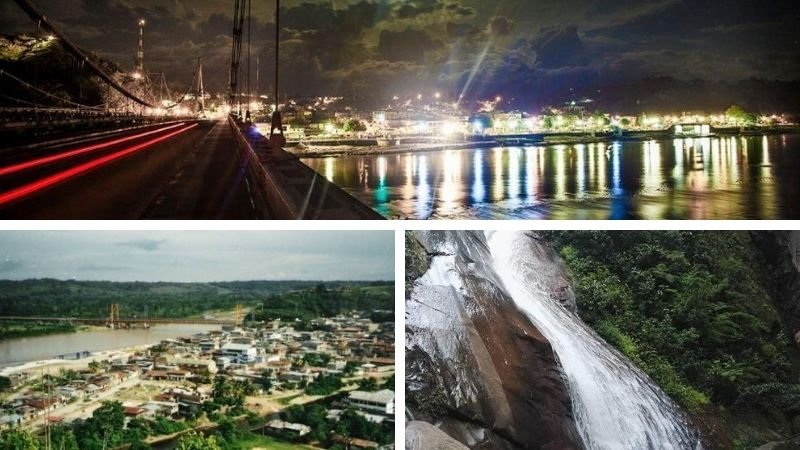
Aguaytía is the capital of the Padre Abad province in the Ucayali region of Peru. It is located on the banks of the river of the same name, a tributary of the Ucayali River, between the cities of Tingo María and Pullcapa, offering landscapes of the Peruvian jungle.
The Aguaytía river basin has an approximate area of 1,762,086 ha., equivalent to 17.21% of the Ucayali Region; Its territory includes the high jungle, although mostly the low jungle, and it is covered by a wide hydrographic network, the central axis of the basin being the Aguaytía river and a sector of the Ucayali river, and the respective water currents that flow there (Institute Research of the Peruvian Amazon, 2002).
Native settlers and communities
Since ancient times, the first settlers of the province of Padre Abad were the indigenouspeople of the Cashibogroup, descendants of the Panolinguistic family; It was also inhabited by the Shipibo-Conibo, Shetebo, Cacataibo and Carapacho.
Aguaytía and the exploitation of rubber
In the period 1889-1915, the basins of the Aguaytía and San Alejandro rivers became extractive fronts of the Peruvian economy during the exploitation of rubberin the Amazon, violently incorporating the indigenous population.
At the same time, labor was added from the jungle and sierra area, leading to a wave of migration to this producing region.
Later, the immigrants dispersed on the riverbanks and, consequently, Aguaytía began to be populated as a hamlet in 1914.
Counting among its first inhabitants Gustav Ernest Fischer and his wife Eva María Alfageme López, a Swiss national, as well as Augusto Fernández de Paredes Abril and his family, a Lima native and rubber tapper in the Peruvian Amazon in the Putumayo area (Torres, s.f.).
tourist attractions
Among the places of tourist interest near the city of Aguaytía, we can mention the bridge that is located over the Aguaytía River, built between 1940-1942, being the largest in Peru.
The bridge over Velo de la Novia, the Aguaytía boardwalk where you can see the river and has rest areas for passers-by; the Velo de la Novia waterfall that flows into a natural pool.
There are also the Ducha del Diablo, Regalías and Santa Rosa waterfalls.
Gastronomy and typical dishes of Aguaytía
For its part, the traditional gastronomyof the Peruvian jungle presents emblematic dishes such as Juane (rice, chicken meat, boiled egg, olives, spices, wrapped in bijao leaves).
La Patarashca (grilled stuffed fish wrapped in bijao leaf).
The tacacho with cecina (roasted green plantain dough, with roasted and smoked pork or chorizo).
The carachama chilcano (Amazonian fish).
Inchicapi de gallina (soup to which corn and peanuts are added), among others (Municipalidad Provincial del Padre Abad, 2020).
References
- Instituto de Investigaciones de la Amazonía Peruana. (2002). Zonificación ecológica económica de la cuenca del río Aguaytía, recuperado de http://repositorio.iiap.gob.pe/handle/IIAP/296.
- Municipalidad Provincial de Padre Abad. (2020). Found on: http://www.munipadreabad.gob.pe/.
- Torres, Y. s.f. Relación entre la evolución cronológica, histórica y el desarrollo integral del poblador ucayalino, recuperado de https://www.academia.edu/9134726/historia_de_ucayali.

Economist (Central University of Venezuela). Full professor and researcher attached to the “Edgar Abreu Olivo” Agrifood Research Center, Universidad de Los Andes. Doctor from the University of La Laguna (Spain). Award “One of the 10 most consulted authors of the Saber ULA university portal” (2005); prize in the III Essay Contest of the Central Bank of Venezuela BCvoz Economico, 2016, with the work “Theobroma cacao: transformation and consumption of the “food of the gods” in Venezuela and the world” (co-authored).
This post is also available in:
![]() Español (Spanish)
Español (Spanish)
